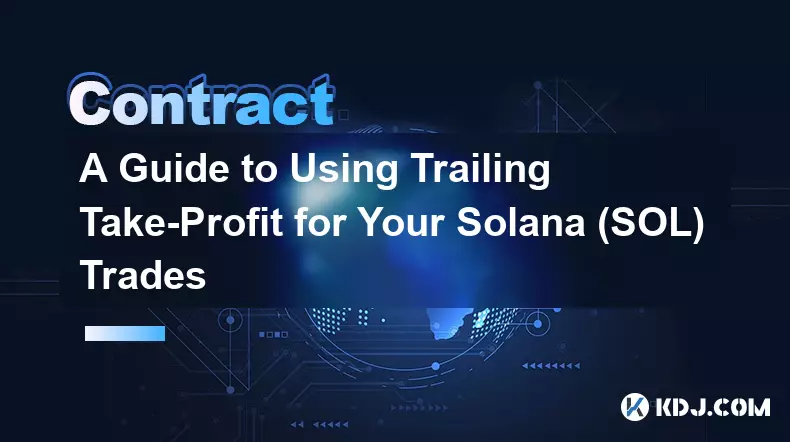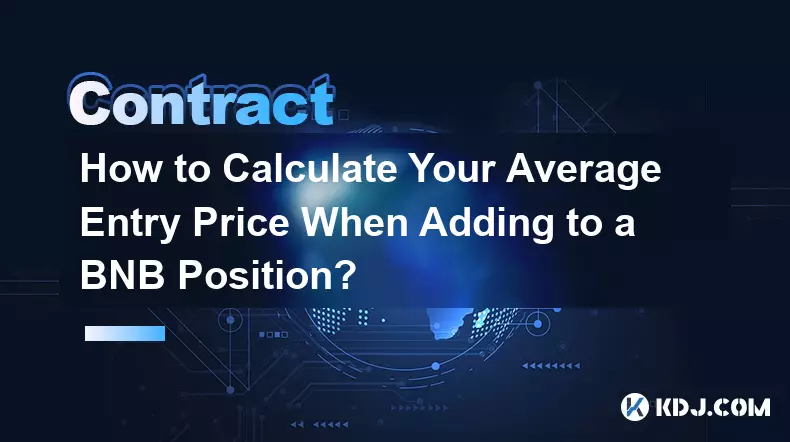-
 bitcoin
bitcoin $110415.485139 USD
-1.74% -
 ethereum
ethereum $3914.309383 USD
-1.58% -
 tether
tether $1.000075 USD
0.00% -
 bnb
bnb $1116.910315 USD
1.41% -
 xrp
xrp $2.562069 USD
-1.96% -
 solana
solana $193.888910 USD
-0.02% -
 usd-coin
usd-coin $0.999800 USD
-0.01% -
 dogecoin
dogecoin $0.192383 USD
-0.47% -
 tron
tron $0.296815 USD
0.66% -
 cardano
cardano $0.641286 USD
-0.18% -
 hyperliquid
hyperliquid $47.495653 USD
-0.35% -
 chainlink
chainlink $18.106533 USD
1.42% -
 bitcoin-cash
bitcoin-cash $561.296588 USD
0.00% -
 stellar
stellar $0.316591 USD
-0.21% -
 ethena-usde
ethena-usde $0.999227 USD
-0.01%
How to manage a losing Bitcoin contracts position?
Bitcoin futures losses stem from leverage, volatility, and emotional decisions; managing risk with stop-losses, reduced position sizes, and disciplined strategies is crucial.
Oct 26, 2025 at 12:00 pm

Understanding the Nature of Bitcoin Futures Losses
1. Bitcoin futures contracts are leveraged instruments that amplify both gains and losses. Traders often enter positions expecting price movements in their favor, but volatility can quickly shift market direction. When a position moves against expectations, emotional responses such as denial or overconfidence may delay necessary actions.
2. The decentralized and unregulated nature of cryptocurrency markets means price manipulation, sudden news events, and whale activity can trigger sharp reversals. These factors make it difficult to rely solely on technical analysis when managing open contracts.
3. Liquidation risk increases significantly with higher leverage. A losing position can be automatically closed by the exchange if the margin balance falls below maintenance requirements. This process occurs without user intervention, leading to total loss of initial margin.
4. Recognizing that losses are inherent to trading helps maintain discipline. Successful traders do not avoid losses—they manage them systematically. Accepting a small loss early prevents it from escalating into a catastrophic one.
Strategies to Mitigate Downside Exposure
1. Setting stop-loss orders is one of the most effective tools for limiting downside. A predefined exit point ensures that emotions don’t interfere when the market turns. For Bitcoin futures, these orders should account for normal volatility spikes to avoid premature triggering.
2. Reducing position size during uncertain market phases decreases exposure. Instead of holding a full contract, scaling down allows more room to absorb adverse price swings while preserving capital for future opportunities.
3. Rolling the position forward—closing the current contract and opening a new one with a later expiry—can provide breathing room. This approach does not eliminate the loss but defers settlement, giving time for market conditions to improve.
4. Hedging with offsetting positions in spot Bitcoin or inverse perpetual swaps can neutralize directional risk. For example, going long on spot BTC while holding a short futures contract reduces net exposure without closing the original trade.
Psychological Discipline in Crisis Management
1. Emotional detachment is crucial when facing unrealized losses. Traders who view their equity as 'the market’s money' rather than personal capital tend to make more rational decisions under pressure.
2. Reviewing past trades objectively helps identify patterns in decision-making errors. Keeping a detailed journal of entry rationale, exit rules, and emotional state enables continuous improvement.
3. Avoiding revenge trading after a loss prevents compounding mistakes. Jumping into another high-leverage position to recover lost funds typically leads to further drawdowns due to impaired judgment.
4. Sticking to a pre-defined risk management framework overrides impulsive behavior. Allocate no more than 2% of total trading capital per trade to ensure survivability through multiple losing streaks.
Reassessing Market Conditions and Adjusting Tactics
1. Monitoring on-chain metrics like exchange inflows, hash rate trends, and large transaction volumes provides insight into underlying market structure beyond price action.
2. Analyzing order book depth and funding rates on major exchanges reveals whether the current trend has sustainable momentum or is driven by speculative leverage.
3. Shifting from aggressive directional bets to range-bound strategies—such as selling options or using tight spread trades—can generate income while waiting for clearer signals.
4. Engaging in peer discussions within trading communities offers alternative perspectives. Blind spots in analysis are often exposed through constructive critique from experienced participants.
Frequently Asked Questions
What happens when a Bitcoin futures position gets liquidated?Liquidation occurs when the margin level drops below the required threshold. The exchange automatically closes the position at the prevailing market price, resulting in total loss of the initial margin. Some platforms charge additional fees if the closure happens in unfavorable liquidity conditions.
Can I add more margin to prevent liquidation?Yes, most exchanges allow users to increase margin manually before liquidation triggers. This practice, known as margin top-up, improves the maintenance buffer and delays forced closure. However, adding funds to a losing position should only occur if the original thesis remains valid.
Is averaging down a safe strategy in futures trading?Averaging down—opening additional positions at lower prices—increases exposure and risk. In volatile markets like Bitcoin, this can accelerate losses if the downtrend continues. It should only be done with strict stop levels and reduced leverage.
How do funding rates affect my losing position?In perpetual swap contracts, funding rates are periodic payments between long and short holders. If you hold a losing long position during positive funding periods, you pay fees to shorts, increasing the cost of carrying the trade. This adds financial pressure beyond price movement.
Disclaimer:info@kdj.com
The information provided is not trading advice. kdj.com does not assume any responsibility for any investments made based on the information provided in this article. Cryptocurrencies are highly volatile and it is highly recommended that you invest with caution after thorough research!
If you believe that the content used on this website infringes your copyright, please contact us immediately (info@kdj.com) and we will delete it promptly.
- Essex Post Office, 5p Coins, and King Charles: A Royal Mint Revelation!
- 2025-10-23 10:30:16
- Waymo's Newark Airport AV Tests: Alphabet's AI Gamble Pays Off?
- 2025-10-23 10:30:16
- King Charles 5p Coins: A Royal Flush in Your Pocket?
- 2025-10-23 10:35:18
- Solana, Crypto Advisory, and Forward Industries: A New York Minute on the Future of Finance
- 2025-10-23 08:51:22
- MAGACOIN: Ethereum Whales Dive into the Hottest Presale of 2025
- 2025-10-23 08:51:22
- Kadena's End of the Road? KDA Token Plummets Amid Project Abandonment
- 2025-10-23 08:55:34
Related knowledge

A Guide to Using Trailing Take-Profit for Your Solana (SOL) Trades
Oct 30,2025 at 01:00am
Understanding Trailing Take-Profit in Solana Trading1. Trailing take-profit is a dynamic order type that adjusts with the market price, allowing trade...

How to Calculate Your Average Entry Price When Adding to a BNB Position?
Oct 28,2025 at 12:24am
Understanding the Concept of Average Entry Price1. The average entry price is a crucial metric for traders who accumulate positions in assets like BNB...

What Is the Maximum Leverage Available for Cardano (ADA) Trading?
Oct 26,2025 at 12:18pm
Understanding Leverage in Cardano (ADA) Trading1. Leverage allows traders to control a larger position using a smaller amount of capital. In the conte...

A Guide to Using Moving Averages for Trading XRP Futures.
Oct 30,2025 at 05:54pm
Understanding Moving Averages in XRP Futures Trading1. Moving averages are among the most widely used technical indicators in cryptocurrency futures t...

Why Is My Ethereum (ETH) Position's PnL Negative on a Winning Trade?
Oct 30,2025 at 11:54am
Understanding Market Volatility in the Crypto Space1. Cryptocurrency markets are known for their rapid price swings, driven by factors such as investo...

How to Long Bitcoin (BTC) with Leverage: A Step-by-Step Example
Oct 30,2025 at 12:36pm
Understanding Leveraged Long Positions in Bitcoin1. A leveraged long position allows traders to amplify their exposure to Bitcoin’s price movements wi...

A Guide to Using Trailing Take-Profit for Your Solana (SOL) Trades
Oct 30,2025 at 01:00am
Understanding Trailing Take-Profit in Solana Trading1. Trailing take-profit is a dynamic order type that adjusts with the market price, allowing trade...

How to Calculate Your Average Entry Price When Adding to a BNB Position?
Oct 28,2025 at 12:24am
Understanding the Concept of Average Entry Price1. The average entry price is a crucial metric for traders who accumulate positions in assets like BNB...

What Is the Maximum Leverage Available for Cardano (ADA) Trading?
Oct 26,2025 at 12:18pm
Understanding Leverage in Cardano (ADA) Trading1. Leverage allows traders to control a larger position using a smaller amount of capital. In the conte...

A Guide to Using Moving Averages for Trading XRP Futures.
Oct 30,2025 at 05:54pm
Understanding Moving Averages in XRP Futures Trading1. Moving averages are among the most widely used technical indicators in cryptocurrency futures t...

Why Is My Ethereum (ETH) Position's PnL Negative on a Winning Trade?
Oct 30,2025 at 11:54am
Understanding Market Volatility in the Crypto Space1. Cryptocurrency markets are known for their rapid price swings, driven by factors such as investo...

How to Long Bitcoin (BTC) with Leverage: A Step-by-Step Example
Oct 30,2025 at 12:36pm
Understanding Leveraged Long Positions in Bitcoin1. A leveraged long position allows traders to amplify their exposure to Bitcoin’s price movements wi...
See all articles









































































